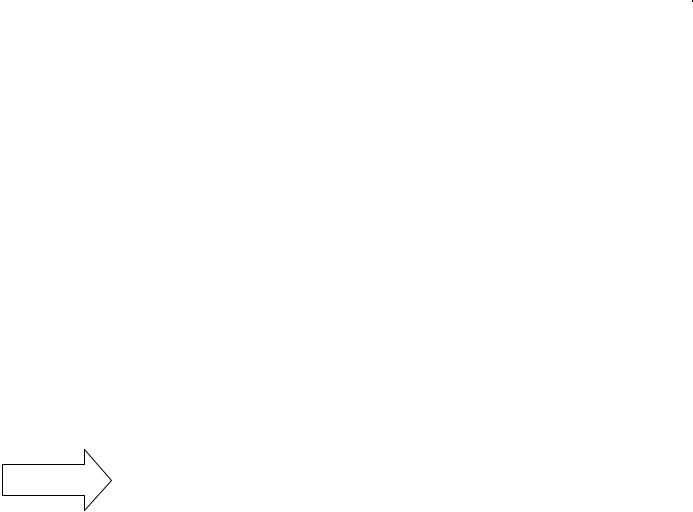
книги / First steps in biotechnology. ╨Я╨╡╤А╨▓╤Л╨╡ ╤И╨░╨│╨╕ ╨▓ ╨▒╨╕╨╛╤В╨╡╤Е╨╜╨╛╨╗╨╛╨│╨╕╨╕
.pdf
8.Choose one of the topics from the list below for your conference. Organize the conference. Invite students of other groups / universities.
INADEQUATE PROTECTION of the World Ocean
TOURISM & DEVELOPMENT
SHIPPING
OIL & GAS
AQUACULTURE
CLIMATE CHANGE
Conference feedback
1. Criteria |
4 very |
3 good |
2 poor |
1 very |
|
good |
|
|
poor |
How was the overall organiza- |
|
|
|
|
tion of the conference? |
|
|
|
|
How can you rate the present- |
|
|
|
|
ers? |
|
|
|
|
All the necessary technical facil- |
|
|
|
|
ities were available for the par- |
|
|
|
|
ticipants. |
|
|
|
|
How was the venue? |
|
|
|
|
How was the reception you re- |
|
|
|
|
ceived at the conference? |
|
|
|
|
The conference was informa- |
|
|
|
|
tive. |
|
|
|
|
Did you gain any helpful skills? |
|
|
|
|
Total scores: |
|
|
|
|
2. Comments and suggestions |
|
|
|
|
|
|
|
|
|
What did you like most about |
|
|
|
|
the conference? |
|
|
|
|
|
|
|
|
|
What did you like least about |
|
|
|
|
the conference? |
|
|
|
|
|
|
|
|
|
91

Did the conference meet your expectations?
What are the critical areas of improvement?
OBJECTIVESREVIEW |
|
I can … |
|
understand a video about marine |
Very well________Not very well |
biotechnology. |
|
write a respond to a video. |
Very well________Not very well |
listen for gist. |
Very well_______Not very well |
make a research. |
Very well________Not very well |
use a question chart. |
|
take turns in discussion. |
Very well________Not very well |
|
WORDLIST |
algae |
environment |
alternative |
fluorescent |
aquaculture |
neurodegenerative |
attest |
neuron |
brainbow |
predator |
climate change |
transgenic |
consume |
unsustainable |
displace |
wiring |
92

UNIT 8
BIOTECHNOLOGY: SOLUTION OR PROBLEM?
In this unit you will …
Listen / watch, read and talk about
endangered animals
cloning human embryos
ethical problems in biotechnology
Learn how to …
make needs analysis
read for a main idea
talk about advantages and disadvantages
Activate your knowledge.
How do you understand this quotation by Leon Kass*:
Almost everybody is enthusiastic about the promise of biotechnology to cure disease and to relieve suffering.”
“
Why does he say “almost everybody”? Give your opinion.
Remember
Predict
PREAPRING TO WATCH
1. An endangered species is one whose numbers are so small that it is at risk of extinction. What endangered species do you know?
2.The video you are going to watch is called “Biotechnology and Endangered Animals”. Before watching answer the questions and
write your ideas below (Fig. 37):
1 What do you think the video will be about? 2 How do you connect to it?
* Leon Kass is an American physician, scientist, educator, and public intellectual. Kass is often referred to as a bioethicist.
93

The name of the video reminds me of
___________________________________
___________________________________
___________________________________
|
It makes me think of |
|
_____________________________________ |
|
_____________________________________ |
|
_____________________________________ |
|
_____________________________________ |
I have a connection |
____________ |
|
|
________________________________ |
|
________________________________ |
|
________________________________ |
|
________________________________ |
|
____________ |
|
|
Fig. 37 |
3. Complete the sentences choosing the correct word.
1 The future of giant panda, banteng and many other magnificent animals is threatened / bright.
2 Thanks to animal biotechnology we are able to enhance / to reduce biodiversity.
3 Genetic selection, assistant reproductive technologies help preserve / reserve endangered species.
4 One way researchers worked to increase endangered species is animal / human cloning.
5 Animal cloning is a breeding / chemical method.
6 Animal cloning doesn’t allow / allows the production of genetic twin.
7 In 2001 scientists at the university of Teramo successfully / unsuccessfully cloned a mouflon.
8 Tracking helps to prevent unnecessary / necessary inbreeding with a small population.
9 Genetic diversity promotes reproduction of unhealthier/ healthier endangered species.
10 Using genetic testing researcher discovered that the Florida panther had previously bred with the closely-related / far-related Texas cougar.
94

WHILE WATCHING
4.Watch the video https://www.youtube.com/watch?v=vZrydxKi9Y8 and check your ideas to exercise 3.
5.Watch the video again and name the endangered animals which population was increased with the help of animal biotechnology:
Giant panda
Mouflon
Bentang
Argali
Mongolian gazelle
Florida panther
Texas cougar
6.What biotechnological methods mentioned in the video do you remember?
POST WATCHING
7. Think back over the video. Complete the chart.
What do I know |
What do I wonder? |
What questions do |
about the topic? |
|
I still have? |
|
|
|
DISCUSSION
8.Work in small groups. Discuss which other biotechnological methods can help preserve endangered species of animals and plants.
9.Explore the most popular endangered species in Russia. Use the follow-
ing chart for help.
TIP: use if necessary http://www.arkive.org/endangered-species/species
95

Endangered |
Threats |
Outcome |
Possible |
species |
|
|
Solutions |
|
|
|
|
PREPARING TO LISTEN
1. You are going to listen to the Remember podcast “Scientists Clone Human Embryos To Make Stem Cells”. Work in pairs. Answer
the questions.
1 What are stem cells?
2 Why is there such an interest in stem cells?
3 Where do stem cells come from?
Stem cell is an unspecialized cell that can give rise to one or more different types of specialized cells, such as blood cells and nerve cells. Stem cells are present in embryos and in various tissues of adult organisms and are widely used in scientific research.
Understanding key vocabulary
2. Work in pairs. Discuss the meaning of the words in bold.
TIP: Use if necessary www.dictionary.com
1 Scientists have cloned human embryos that can produce embryonic stem cells.
2 But as appeared in stem reports it’s also highly controversial. 3 Very early human embryos are destroyed to get stem cells.
4 Despite that scientists have been trying to clone embryonic stem cells that are essentially a genetic match for patients.
5 The researchers first recruited women who were willing to provide eggs for the research.
6 Shoukhrat Mitalipov searched how to stimulate each egg so that it would develop into an embryo without the need to be fertilized with sperm.
7 They need to find the perfect combination of electric pulse and chemical.
8 This combination included something surprising: caffeine.
9 the creation and destruction of a human embryo is morally repugnant to people who believe an embryo has the same moral standing as a human being.
10 A professor of medicine and a bioethics thinks that to create a human being for the sole intention of destroying that human being even for a good purpose is morally wrong.
96

11 Where you can improve a patient's quality of life tremendously through this kind of technology, other scientists believe that it is ethical to use material like this.
WHILE LISTENING
3. Listen and answer the questions.
www.npr.org/player/v2/mediaPlayer.html?action=1&t=1&islist=false&id=183916891& m=184261872
1 Why have been scientists trying to use cloning techniques to make embryonic stem cells?
2 Why was Shoukhrat Mitalipov’s experiment called “The Starbucks experiment”?
4.Write three facts about Shoukhrat Mitalipov’s research.
5.Listen again. What are two controversial opinions about Mitalipov’s research? Write them into the bubbles with your own words (Fig. 38).
Opinion 1 |
Opinion 2 |
|
Fig. 38
DISCUSSION
6.What opinion from exercise 5 do you share? Give your reasons.
7.Organize a roundtable, follow the instructions and discuss the question:
Why is there a controversy about using embryonic stem cells?
Work in small groups (4-6 students).
Within each group make a list of possible responses on the paper – at first without discussion.
97

Each student folds over the paper when they’ve finished writing on it and passes it to the next person in their group.
When all students in the group have written a response, unfold the paper and the smaller groups can discuss the responses.
If there is time, each group can share their best response along with some thoughts to the whole class.
8.Think back over the podcast. Complete Needs Analysis chart.
Problems |
Podcast Needs |
|
Future Needs for Your |
|
|
|
|
Course |
|
Make a list of the problems that |
Make a list of abilities needed |
|
Make a list of needs to study |
|
you had while listening. |
to understand the podcast. |
|
English to help you with your |
|
|
|
|
course work. |
|
|
|
|
|
|
|
|
|
|
|
PREPARING TO READ
1. You are going to read the text “Social Implications and Ethical Concerns”.
Understand Look at the title of the text what is it about? Make your predictions complete the first and the second columns of the prediction chart:
My Prediction |
Why I made my |
What was the text |
Was my predic- |
|
|
prediction? |
about? |
tion correct? |
|
|
|
|
Yes |
No |
|
|
|
|
|
98

2. Explain the meanings of the vocabulary below to your partner.
TIP: Use if necessary www.dictionary.com
organ transplants |
insulin |
faith |
alteration |
obesity |
|
|
|
|
|
3. Skim the text. Complete the last two columns of the prediction chart.
Social Implications and Ethical Concerns.
Religious issues include those people whose beliefs reject medical intervention, especially things such as receiving blood products, organ transplants, vaccines, and non herbal medications. An example was how insulin derived from pork was a problem for those of the Jewish and Muslim faith, and insulin from beef was a problem for those of the Hindu faith.
Another issue is animal rights issues: initially, insulin was derived through the killing of pigs and cows to obtain the hormone from their pancreas, and very little of the available insulin is produced this way today. Some research has used pork pancreas as organ transplants in diabetics.
Another animal right problem is that genetic engineering issues include the alteration of animal DNA to produce human insulin which would eliminate a lot of the problems with animal proteins that caused allergic reactions in some insulin users. Most insulin today is derived through the genetic alteration of a type of bacteria so that it produces insulin (recombination DNA process). Very few if any people suffer allergic reactions to this form of insulin.
Social issues really depend on the government and what they decide is best to do. The government might say that being overweight is a crime because it causes problems like diabetes. It also depends on whether or not the insurance companies or hospitals will take coverage of overweight people or not, they might consider it a problem because obesity can lead to diabetes, which then the insurance companies might need to step up, therefore they might as well just take coverage of obesity in the first place and help the person lose weight before he develops diabetes. It may take decades for the people to realize that many type 2 diabetics are neither fat nor overindulge in unhealthy habits.
The Human Genome Project. (June 20, 2016)©
4.Read the text again. Identify the problems and complete the chart. Write the main idea of the text with your own words (Fig. 39).
Understanding the main idea
99

MAIN IDEA
DETAIL |
DETAIL |
DETAIL |
DETAIL |
Fig. 39
DISCUSSION
5.Work in pairs. Answer the questions. Discuss your ideas with other group mates.
1 What other ethical problems are concerned with biotechnology? Give examples.
2 Is it possible to justify the use of biotechnological methods in ethically controversial situations? Why / Why not?
6.Work in small groups. Make a project about a debatable use of biotechnological inventions and discoveries.
Create
TIP: While working on a project follow the logic of the chart below (Fig. 40).
Fig. 40
100
